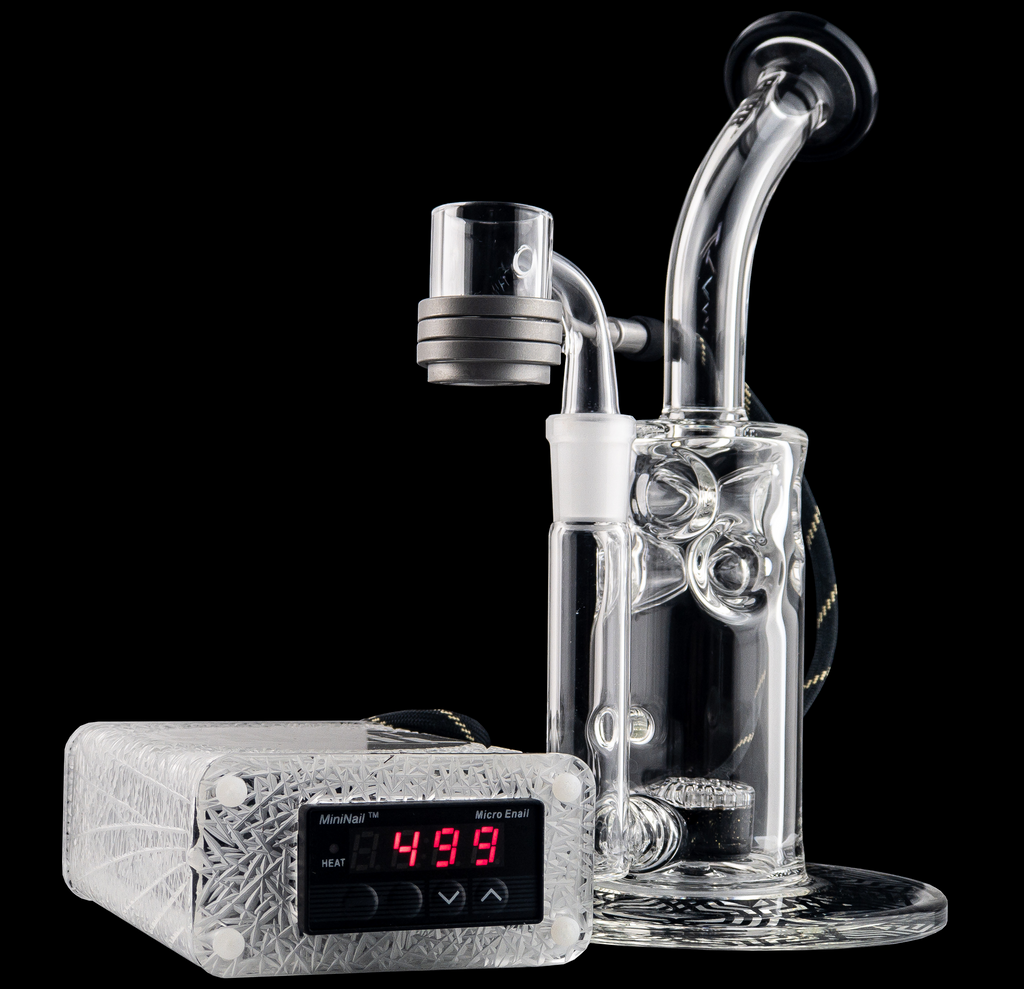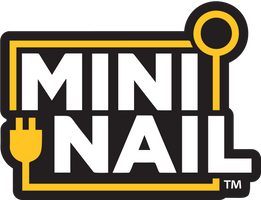
When it comes to choosing cannabis concentrates to use with your enail kit, we won’t be the first to tell you that the options out there are endless: between juicy live resin, pungent shatter, and frosty diamonds, the types of sauce are as unique as they are diverse. There’s an option out there for everyone, and that’s exactly why things can get a bit tricky for dabbers looking to try them all – figuring out how to get the most out of each one is no easy feat!
An often overlooked detail is that what actually makes all the difference between different concentrate types isn’t THC or CBD content, but rather terpene type and content. Terpenes are the flavor and scent molecules found in and extracted from the crystal-like trichomes on cannabis plants and are responsible for creating varying flavor profiles and effects. To get the most out of the terpene profiles and maximize their flavor nuance and complexity, finding the right temperature for dabbing is incredibly important. Not only does the best enail temp fit vary by strain and terpene content, but it’s actually sparked (no pun intended) quite a bit of debate about which works best.
In this blog, we’ll dive into some of the idiosyncrasies and best practices when it comes to finding the best temp for dabs with your MiniNail.
Less Heat + Terpenes = Perfect Dab Temp
Let’s start with an overview: having a basic understanding of how dabbing works will help understand why temperature levels are so important. Concentrates are made by extracting cannabinoids from the plant, and their effects are activated when heated convectively instead of conductively. As explained in Hemper, “convective heating is healthier, smoother, and more effective because it doesn’t ‘burn off’ and waste the essential and active ingredients in the concentrate.” Convective heating also allows you to control the temperatures at which you heat your concentrates – which is why so many frequent dabbers have turned to using an enail instead of the classic, yet dated, torching method.
Different terpenes will be more noticeable at different temperatures, for example:
- Humulene (435°F): Flavors of woody earthiness will act as anti-inflammatory agents and help with appetite suppression and pain.
- Pinene (420-430°F): Sharp and sweet, these flavors of pine are generally helpful with inflammation and asthma.
- Caryophyllene (390°F): Peppery, woody, and spicy, this terpene profile assists with muscle spasms, pain, and insomnia.
- Linalool (388°F): On the fruitier and floral citrusy side, users will experience relief from insomnia, stress, and anxiety.
- (Limonene 350°F): With citrus-heavy notes of lemon and orange, Limonene aids with anxiety and depression.
- Myrcene (330-334°F): Myrcene, with flavors of herbal clove and citrus, helps users with its anti-inflammatory qualities.
Getting the Most Out of Terps: Cold Start Dabs
One of the biggest advantages of using lower temperatures when dabbing is the ability to get the most out of your concentrates. This method is called a cold-start dab, in which users will load their concentrate of choice onto the nail before heating it. This creates an opportunity to better preserve cannabinoids that, in a hotter setting, would actually get burnt off and lost.
Understanding Temperature-Based Effects

It’s important to note that there is such a thing as an enail temperature being either too hot or too cold – so, let’s break down some of the details that come with different temperature levels.
32°F – 310°F (0°C – 154°C): Usually far too low to actually vaporize the concentrate, these temperatures won’t yield much in terms of clouds and vapor, producing little effect or flavor.
315°F – 450°F (157°C – 232°C): A perfect place for low-temperature dabbing, this temperature range vaporizes terpene profiles without burning them, allowing for the best possible flavor as originally intended by the extraction process.
450°F – 600°F (232°C – 315°C): In this medium temperature setting, you’ll experience lower flavor profiles but likely higher cloud production.
600°F – 900°F (315°C – 482°C): Users who dab in this range will see their concentrates combust quickly and produce thick, smoky clouds upon vaporizing. Note that much of the unique flavors will be lost at these temperatures as the terpenes will be more burnt off.
900°F + (482°C +): We don’t recommend any temperatures in this range – not only do they usually create harsh and burnt hits, but they will actually get to the point of being unsafe as carcinogens and toxins are released in vapor form at these temperatures.
Here at MiniNail, we’re all about making sure that you are having the best dabbing experience time and time again. For more information about tips, tricks, and best practices, make sure to follow us on Instagram! We post new info all the time and would love to share it and connect with you!

